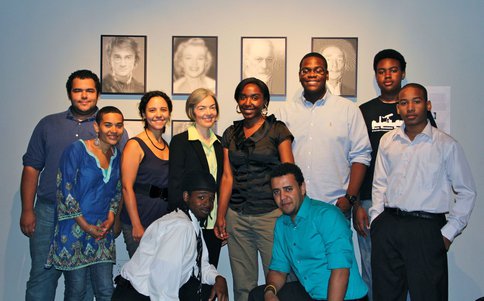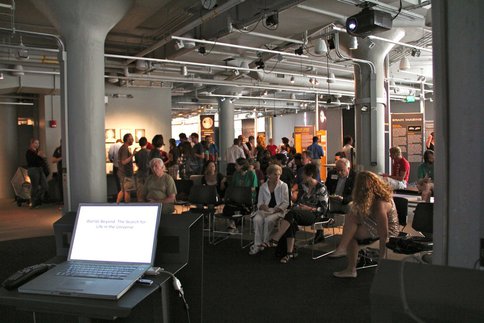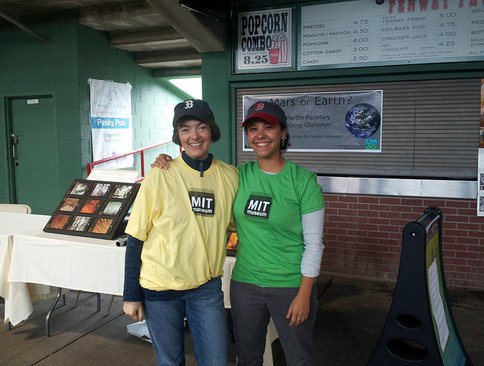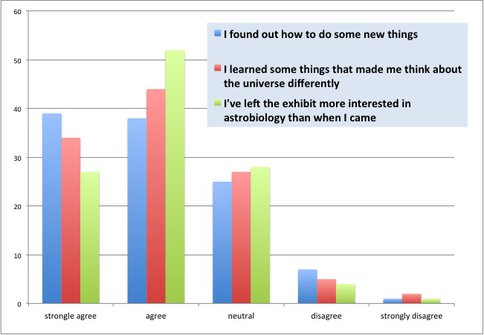2011 Annual Science Report
 Massachusetts Institute of Technology
Reporting | SEP 2010 – AUG 2011
Massachusetts Institute of Technology
Reporting | SEP 2010 – AUG 2011
EPO Activity: A Traveling Astrobiology Exhibit: Combining Youth Engagement With Public Outreach
Project Progress
In collaboration with the MIT Youth Astronomy Apprenticeship program, we created and displayed a temporary museum exhibit on Astrobiology called Worlds Beyond: The Search for Life in the Universe. The exhibit was designed and built by the YAA apprentices: Boston Public High school students and recent BPS graduates now enrolled in community college in the Boston area. The exhibit was guided by Dr. Phoebe Cohen, YAA director an astronomer Dr. Irene Porro, and members of the MIT team including PI Roger Summons. The exhibit featured hands-on components relating to a wide array of astrobiology topics including extremophiles, exoplanet detection, the geology of Mars, the habitable zone, tools from the Curiosity rover, and the special properties of water. The exhibit was on display at the MIT Stata Center for three days and at the MIT Museum for 8 days. At least two YAA interns were present at the exhibit at all times to answer questions and help visitors understand the exhibit components, as well as to run hands-on activities on the properties of water. The opening day of the exhibit’s stay at the MIT Museum was accompanied by an opening reception featuring speakers from the MIT/Harvard community. Components of the exhibit were also brought to the Boston Public Schools middle school orientation event at Fenway Park. In the coming months, the exhibit will be used at additional outreach events including The Cambridge Science Festival in April 2012.
The goals of this project were twofold:
1) Educate and expose the public to the field of Astrobiology and to the research taking place within NASA’s NAI program.
2) Engage the Youth Astronomy Apprenticeship youth in the process of exhibit design and content development, educating them about Astrobiology, and helping to build their communication skills.
Both goals were accomplished. Over 1,000 people viewed the exhibit over its 11 day run. The YAA interns collected 113 surveys from visitors which asked questions relating to how the exhibit made them feel, if they learned new things, and their attitudes towards astrobiology topics. Results from the surveys can be seen in the figures below – in general, the exhibit exposed people to new ideas and new information, and increased the desire for additional knowledge about astrobiological topics. Visitors were consistently impressed with the youth interns, who gained deep knowledge of astrobiology through the process of planning and designing the exhibits, as well as through guiding visitors through each of the exhibit components.
Some quotes from the surveys include:
“I came to understand more deeply how the Earth fits in to the universal perspective and I definitely got my questions answered!”
“Life beyond earth research is more advanced than I thought.”
“The youth guides were really nice and attentive. I was made aware of how much Kepler has done so far.”
“Great intro to Astrobiology!”
“Probing the extermes of environmental conditions helps us expand the search for life – opens the mind to new and exciting realms.”
I loved the interactive things! Very hands on and interesting.”
The team of interns, along with Dr. Phoebe Cohen and Dr. Irene Porro, who designed and built the Worlds Beyond astrobiology exhibit.
Visitors to the MIT Museum listen to a public lecture on astrobiology as a part of the Worlds Beyond opening event.
Intern Kenneth Cottrell explains a model of a mass spectrometer to PI Roger Summons
Results from the visitor survey, n=113
Results from the visitor survey, n=113
Results from the visitor survey, n=113






